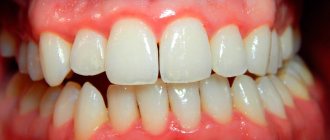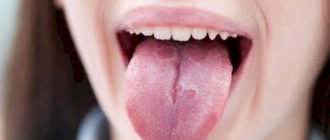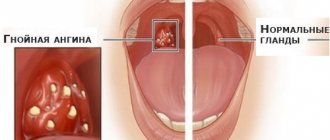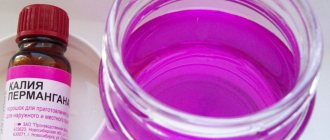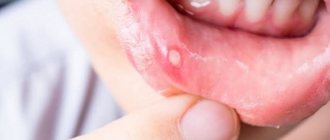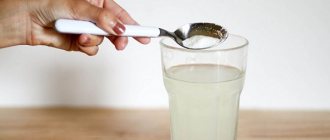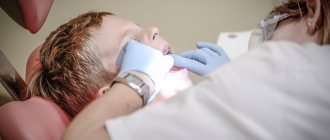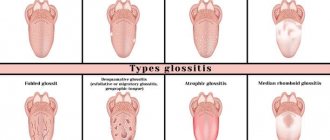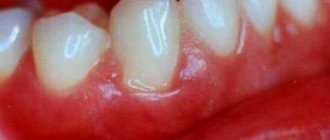What is soda
Soda is familiar to any housewife. The product is very popular and is actively used in everyday life - it is used to clean kitchen utensils, to make flour products more fluffy, etc. In the medical field, sodium bicarbonate is used in the following cases:
- Gargling for throat diseases (including stomatitis).
- Loosening of mucus in the bronchi;
- Bringing blood pressure back to normal.
- Fight heartburn.
- Relief from itching and insect bite marks.
- Fighting skin diseases.
The product can be used not only as rinses, but as lotions, for oral administration, and external applications.
Soda is a reliable and quick way to restore damaged parts of the epithelium and prevent the development of infection in the mouth. Most doctors, when asked whether it is true that soda is an effective means of combating stomatitis, plainly state - yes, soda cures stomatitis; In addition, the remedy is also indicated for the treatment of small children.
Sodium bicarbonate is an alkaline substance, which, when interacting with an acidic environment, leads to the neutralization of the latter; as a result of this reaction, water and a salt precipitate are formed. In other words, harmful bacteria, which actively multiply due to the acidic microflora of the oral cavity, die under the influence of an alkaline soda solution. This is the main antimicrobial function of soda.
Reminder! Soda is completely safe, the substance has no toxic effects when used in reasonable doses. It is also not an irritant to the mouth or stomach. Fighting stomatitis using soda is an effective and cheap option to many expensive medications that have similar properties.
Since soda is harmless, it is especially indicated for treating infants, especially since this can easily be done without leaving home. By the way, treatment of the oral cavity is possible in children up to one year old.
To effectively treat stomatitis at home in children, you need to know exactly the list of recommended medications and read the instructions for use.
Compared to a number of antiseptic drugs, soda does not provoke irritation of areas of the oral cavity affected by ulcers - on the contrary, the regeneration of diseased tissues when using a soda solution is accelerated, since alkali, which, in fact, is a drug that has a detrimental effect on the infection. When the microbes in the ulcers die, the patient recovers quickly, and the damaged areas of the oral cavity heal faster. At this time, no contraindications have been found for the use of soda to combat stomatitis.
Video:
Medicines for stomatitis - TOP-11 drugs for treatment
Damage to the mucous membrane: Stomatitis
Stomatitis (from ancient Greek στόμα - mouth) is the most common lesion of the oral mucosa.
The mechanism of stomatitis has not yet been fully identified, but most likely it is due to the reaction of the immune system to irritants. It is believed that stomatitis occurs in cases where, for reasons that are not yet clear, the human immune system reacts to the appearance of molecules that it cannot recognize. The appearance of such molecules provokes an attack by the lymphocytes of the immune system (a type of white blood cell), in much the same way that the human immune system reacts, for example, to an organ transplant. The “attack” of lymphocytes on these unidentified molecules leads to the appearance of ulcerative formations in the mouth, which are called “stomatitis”.
Local factors are also considered to be the cause of its occurrence: failure to comply with oral eubacteriosis. Diseases of the gastrointestinal tract, such as gastritis, duodenitis, colitis, as well as helminthic infestation, can cause catarrhal stomatitis.
With this disease, the oral mucosa becomes swollen, painful, hyperemic, and may be covered with a white or yellow coating. Hypersalivation (increased salivation) is noted. Bleeding gums and bad breath may occur.
Stomatitis itself is not contagious. With herpes, stomatitis can occur as a consequence, but this is already one of the options for a person’s reaction to the herpes simplex virus.
Varieties Allergic Aphthous Vesicular. The causative agent of the disease is an RNA virus belonging to the genus Vesiculorus of the Rabdoviridae family. Vesicular stomatitis is contagious. For this reason, it is recommended to use separate dishes and hygiene products (which should be disinfected after use, at least with boiling water). Herpetic. It is characterized by a sharp increase in temperature, increased drowsiness, and blisters (rash) form on the oral mucosa, which burst after 3 days. Accompanied by gingivitis, viscous saliva. The illness takes 8 days. Treated with interferon Catarrhal - caused by poor oral hygiene Traumatic Ulcerative
Probable causes and predisposing factors - microorganisms that cause infectious diseases (bacteria, viruses, mycoplasmas) - poor quality nutrition - mechanical or thermal damage to the oral cavity, - dehydration caused by diarrhea, vomiting, insufficient water intake, prolonged increase in body temperature, increased urine output , large blood loss – insufficient or excessive oral hygiene – poorly made or poorly installed dentures – use of medications that reduce salivation – vitamin deficiency (vitamin A, vitamin B, vitamin C), lack of iron or folic acid – smoking – malignant tumors in the neck , nose or pharynx – hormonal fluctuations (pregnancy, adolescence, etc.) – anemia – side effects of chemotherapy – prodromal period of HIV infection – Toothpastes and mouth cleaners containing sodium lauryl sulfate. Research suggests that using products containing sodium lauryl sulfate (SLS), a substance commonly found in toothpastes and cleaners to create foam, may make canker sore outbreaks more common. This may be due to the dehydrating effect that SLS has on the oral mucosa, which makes it vulnerable to various irritants, such as food acids. According to some studies, patients who used toothpastes without SLS claimed that they suffered from stomatitis less often. In one study, this reduction reached 81%. According to the same study, patients reported that even if stomatitis developed, the ulcers were less painful if during this period they did not use toothpastes containing SLS.
Diagnosis To identify stomatitis, the doctor usually first examines the patient's medical record and then begins a visual examination of the oral cavity. There are no specific medical tests (such as biopsy or culture) to detect stomatitis. The main sign of stomatitis is the appearance of the ulcers, their location and the fact that stomatitis is a recurring disease. In addition, with stomatitis, the tissue immediately surrounding the ulcer has a normal, healthy appearance, and the patient himself does not experience any significant systemic symptoms (for example, no high fever or feeling unwell). However, with advanced forms of stomatitis, especially in children, multiple ulcers, fever, and deterioration of health are observed.
Treatment methods In most cases, stomatitis goes away on its own within a week. Depending on the type of stomatitis, treatment can be carried out with antiviral, antifungal or other drugs; the type of lesion can be determined by a general practitioner or dentist; improper self-medication can lead to serious complications and generalization of the infection.
Usually, no specific therapy is required; it is enough to limit yourself to a gentle diet and frequent mouth rinses. You can use rinses with antiseptic properties: herbal infusions: chamomile, calendula; diluted aqueous-alcohol solutions of pharmaceutical tinctures (calendula, eucalyptus - 20-30 drops of tincture per 100 ml of water), various ready-made rinses (Dentix, etc.). To reduce pain symptoms, medications containing local anesthetics can be used (for example, Kamistad ointment, which contains lidocaine and chamomile extract). Partially helps is the use of lozenges, which increase salivation, which improves the irrigation of the wound with saliva and also achieves some antiseptic and distracting effect. A solution of baking soda and water has the same effect; chamomile decoction; honey. But the more effective solution is “Sodium Tetraborate”. It is enough to anoint the ulcer with this solution and everything will go away in 3-4 days.
Back at the end of the 20th century, the surest way to treat stomatitis was to lubricate the wound with blue; the disadvantage of this method is that the oral cavity will be blue from the dye solution. Under no circumstances should you use solutions containing alcohol (including iodine), they can cause burns.
Rinsing your mouth with baking soda
Before using soda, it would be a good idea to contact your dentist so that a specialist can identify the pathogen. If there are centers of chronic infection in the oral cavity (these can develop, say, due to caries stones, gingivitis, tartar), the doctor will determine a treatment plan. Also, do not forget to consult your doctor whether it is possible to use soda for stomatitis. If no contraindications are found, treatment can begin.
Soda solution for rinsing is prepared as follows: 1 tsp. soda is mixed with 0.2 liters of water, the latter must first be boiled, but its temperature should not exceed 37°C. For severe symptoms of the disease, rinsing will need to be done every 2-3 hours.
If a baby gets stomatitis, he still cannot rinse his mouth on his own - in this case, a cotton swab is soaked in the solution and the child’s oral cavity is soaked with it.
Reminder! Always remember that to treat infants, the concentration of soda in the solution will need to be reduced to a quarter teaspoon. for 0.2 liters of water.
With an integrated approach to combating stomatitis, herbal treatment is also prescribed. The doctor may also prescribe treatment with antiseptics, the use of antivirals, drugs to enhance immunity, and painkillers. Also, in some cases, vitamins are prescribed.
Rinsing stomatitis is an effective method of treating the disease. On our website you can read a list of solutions and folk remedies for rinsing, as well as contraindications for children.
How to treat stomatitis in children: treatment depending on the type
Depending on the type of stomatitis, its treatment is carried out in different ways, but always under the supervision of a doctor.
- When treating catarrhal stomatitis, caries is eliminated and the mucous membrane is treated with an antiseptic. This type of stomatitis is subject to local treatment.
- If aphthous stomatitis is diagnosed in children, treatment occurs under the supervision of several doctors: an allergist, a gastroenterologist and a dentist. Antiseptic drugs are prescribed, such as Lugol, Hexoral in the form of sprays or rinsing with Iodinol solution. Aphthae are treated with blue, boric acid or soda. To strengthen the body, B vitamins and vitamin C are prescribed. And in the chronic form, immunological drugs are prescribed.
- Herpetic stomatitis in a child is treated therapeutically using local procedures. A small patient is prescribed ointments with an antiherpetic effect. The affected areas are treated with herbal infusions (often sage or chamomile). Treatment of stomatitis in older children with herbal infusions occurs in the form of rinses. Sometimes propolis infusion is used to effectively heal wounds.
If a child has severe herpetic stomatitis, treatment takes place in a hospital.
Treatment of stomatitis in children at home is possible
It is not always possible to identify and treat stomatitis at a mild stage. However, if you notice in time that your child has just begun to have an illness, you will need information on how to treat stomatitis at home.
But under no circumstances start treatment without consulting a pediatrician! He must determine an accurate diagnosis and prescribe the necessary medications.
How can baking soda help with stomatitis?
The use of soda solution has many advantages compared to other drugs:
- Sodium bicarbonate has a pronounced antiseptic effect, which suppresses the growth of bacteria and prevents the growth of infection in the oral cavity.
- Baking soda counteracts acid in the mouth, helping to restore damaged tissue.
- Sodium bicarbonate is safe for humans, so it can be used to treat children, including infants up to one year old.
- The soda solution does not affect the stomach or mucous membranes, does not cause pain, and soothes irritated areas.
- The use of soda is characterized by an anti-inflammatory effect, relieves pain and relieves swelling.
- The frequency of rinsing with soda solution during illness can be 2 hours without any side effects.
- At the end of the rinse, a barrier appears that prevents the development of harmful organisms.
We should not forget about the drug Vinilin. If you use vinylin correctly for stomatitis, it promotes the healing of affected areas and disinfects the oral cavity, up to the complete destruction of bacteria
How to gargle correctly
Use for stomatitis together with medicinal herbs
The effectiveness of soda can be increased if it is used together with various medicinal herbs, for example, with the following:
- Sage
- Calendula.
- Pharmaceutical chamomile.
- St. John's wort.
- Oak bark.
You will need to add half a tsp to your herbal product. baking soda, then rinse your mouth.
Also a useful remedy for fighting inflammation, soothing affected tissues, and restoring the epithelium is aloe juice, which will need to be mixed with 0.2 liters of water, pouring 1 tsp. soda If you don't have aloe, Kalanchoe will also work.
Baking soda for stomatitis is a very effective remedy. However, if the symptoms of the disease do not go away within 3 days, you will need to consult a doctor, who may prescribe more drastic remedies.

